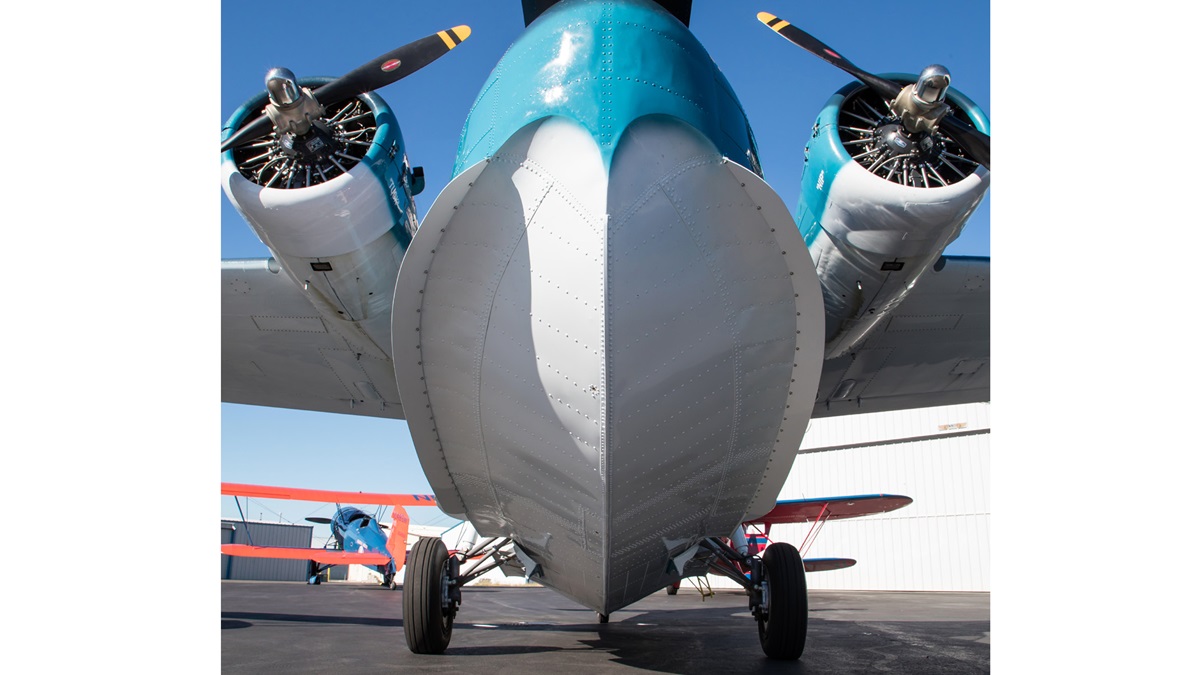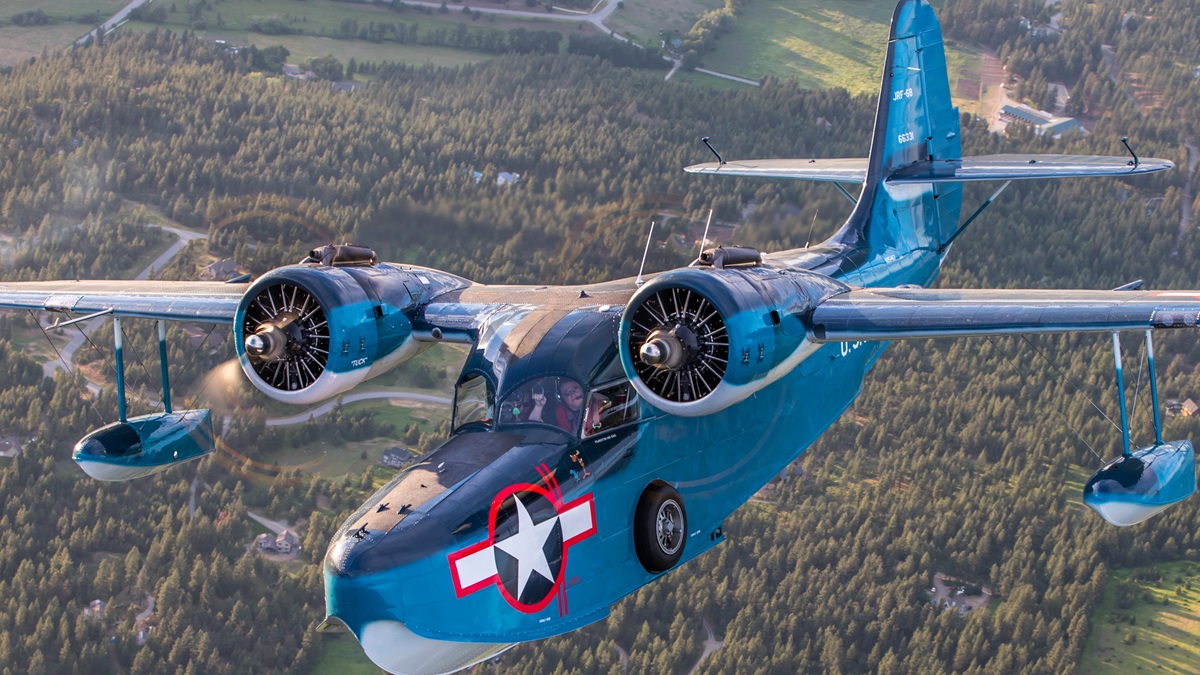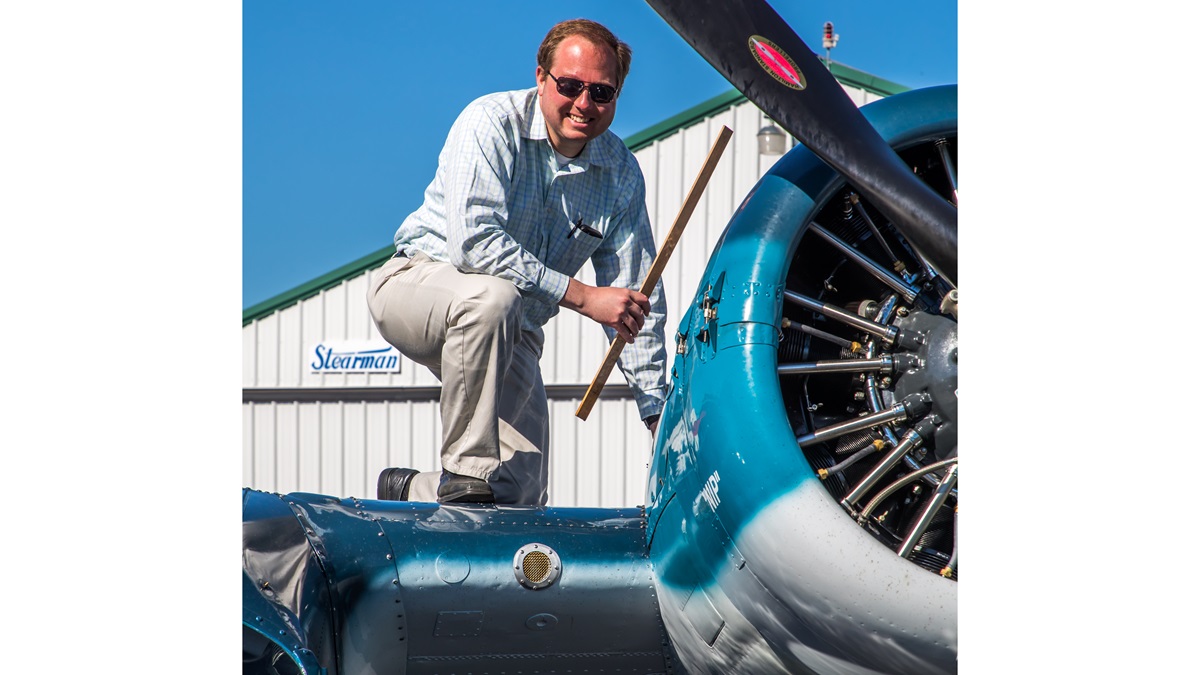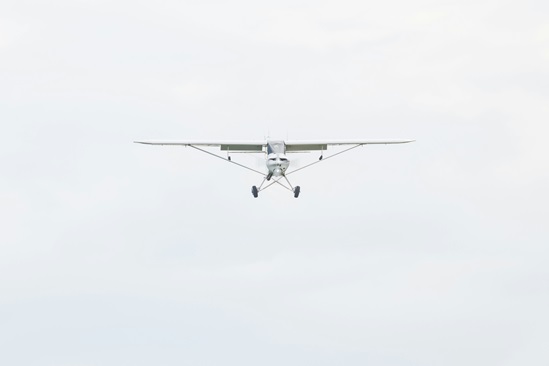Grumman JRF–6B Goose: Goosed
Restoring this Grumman classic was a family affair
By Ken Scott
In 1936, a group of Long Island businessmen approached the well-known aircraft designer Grover Loening. Getting to their offices in New York City—and getting away for the weekends—was becoming annoying.
Trains were crowded; automobiles were rapidly filling the roads and streets. What they needed was a fast and convenient way to access both their offices—from the city’s miles of riverfront—and their lakeside lodges upstate. Something like, say, a large, modern, amphibious airplane. Loening recommended a nearby company headed by one of his former employees, Leroy Grumman. Grumman accepted the challenge, and the result became an aviation classic: the Grumman Goose.
The Goose was the first Grumman airplane with fewer than two wings and more than one engine. The first one flew in 1937 and several were completed for private owners over the next two years. The onset of World War II opened up a whole new market for a rugged, versatile, amphibious airplane that could haul several people—or a couple of depth charges. Eventually 345 Gooses (Geese?) were built. They would serve with four U.S. armed services and dozens of foreign ones. Roles included personnel transport, training, and anti-submarine patrol.
In the hangar, the Goose looked like a big boat. In the air, it doesn’t fly like one.After the war, people and goods still needed to get from one place to another in places where runways were scarce and water was plentiful. One of the airplanes, serial number 1161, now lives in Spokane, on the eastern edge of Washington state. Produced under the military designation JRF–6B, it first flew a year after the Pearl Harbor attack and immediately went to Britain’s Royal Navy under the Lend-Lease program. It spent the war years based in Trinidad, moving personnel between the Caribbean islands and Florida. After the war it served for a couple years with the U.S. Navy and then bounced around for decades. It flew passengers to Catalina Island in California, worked for an oil company in the Gulf of Mexico, and ended up where Gooses tend to end up—in Alaska. It flew there until it was retired in 1988. In 1994 it went on outdoor display at the Palm Springs Air Museum in Southern California. That’s where Addison Pemberton acquired it in 2012—just past its seventieth birthday.
Pemberton, along with his wife, Wendy, and his sons Jay and Ryan, has been restoring historic aircraft for decades. The family received worldwide notice when they took a few scraps of twisted wreckage and re-created—the word “restored” is too small—the oldest flying Boeing in the world, the Boeing 40C. After flying it for several years, they restored a Waco EQC cabin biplane. When that was finished, well, “Wendy always gets antsy seeing me go crazy when I don’t have a project. We’d talked about an airplane that would take our entire family on adventures. We live in a land with a lot of water, so something like the Goose was perfect for our needs.”
The first preflight job was to plug the 11 holes in the hull.Restoration started the way it usually does—by tearing things apart. “The fuselage had been totally redone from the wheel wells aft by a reputable shop in Seattle,” Pemberton explained. “We found everything they’d touched still in perfect shape. The wings and wing center section were a different story. The center section spans the fuselage and contains both engine nacelles. To remove it from the fuselage we had to remove the outer wing panels and engines, disconnect all the engine controls, and lift it off the fuselage with a large crane.”
Both wings and the center section were de-skinned—a process that involves drilling out thousands of three-sixteenth-inch-diameter rivets, one at a time. Even if the skins are to be replaced, it takes concentration and accuracy. A hogged-out hole in the underlying structure can result in a time-consuming repair.
“Once the wings were open, we found some corrosion, which is just a fact of life in old seaplanes. We noticed that the corrosion on the spar caps was always in 18-inch—or some multiple of 18-inch—intervals. We finally figured out that when the aluminum spar caps were extruded at the mill, they were set on a steel rack with supports 18 inches apart. The rapid cooling where the two made contact set up stresses that gave the corrosion a place to start. We ended up with 18 individual spar repairs, each approved by a designated engineering representative and documented in a 57-page report.”
The metal bow compartment needed a complete rebuild. Luckily Pemberton had had the foresight to buy his younger son, Ryan, a computer-aided design system, an English wheel, and a Yoder hammer while Ryan was still in high school. Ryan pounced on those tools and trained himself so expertly that when the Goose arrived a few years later, he’d developed the skills to reproduce the original factory-made bulkheads and skins.
While Ryan rebuilt the nose, Wendy re-covered the fabric control surfaces. When older son Jay was home from his job shepherding Boeing 747s around the globe, he added his skills to the mix. “We had a good core of volunteers, too,” Pemberton said. “We were able to take advantage of some very skilled people. Our best guess is that our family and crew put about 9,000 man-hours into the restoration.”
When the Pembertons acquired the Goose, it had no fuel or control systems installed. “Over the years we’ve been restoring out-of-the-ordinary airplanes, we’ve built up quite a network. We were able to trade for or buy everything we needed,” explained Pemberton, “and in this case the British connection really worked in our favor. The JRF–6B version supplied to the Brits did not have the usual camera port in the aft fuselage, something that greatly simplified the control runs to the tail.”
Finally, after all the hours of metal work and many more hours of painting, the Goose was ready to go. It was time to learn how to fly the beast. After several grueling sessions with Fred Ball—known as “Mr. Goose” (better, maybe, as “Mr. Every Model of Grumman Amphibian”—except that’s too long for a jacket patch)—Pemberton and Jay were ready. “Every once in a while you get to fly with a master,” Pemberton said. “That was flying with Fred.”
Our flight took place on a weekday evening in July. As Pemberton pointed out, “On weekdays most boaters have to be at work the next day, so all the boats tend to disappear early in the evening. On weekends, the lakes are full of them even after dark.”
The first preflight job was to plug the 11 holes in the hull. It may seem strange that an airplane designed to operate on water has holes in the hull, but it makes sense when you understand why—no hull is completely waterproof, especially when water is injected into every skin overlap and rivet at 70 mph. Water will get in, and after the airplane is back on land, it is desirable to get it out, so the plugs are pulled and the hull drained.
Pemberton then climbed up on top of the wing center section and sticked the tanks. The Goose is a big airplane—big enough that a person could, on land, fall and be seriously injured checking the fuel. Power is supplied by two Pratt & Whitney R-985 radials, each rated at 450 horsepower. They burn about 45 gph together when pulled back for an easy cruise, but water takeoffs require all the power available, which consumes fuel in a hurry. The 150 gallons on board would last an hour and half with reserves.
When Pemberton returned to Earth, he conducted the safety briefing. We’d have four passengers in the cabin. Pemberton would be in command, with me in the right seat. We planned three water landings on three different lakes, so we all donned life vests and Pemberton made sure every passenger knew where the nearest exit was, relative to their seating position. My exit was the small sliding window by my right shoulder. I considered the size of the window and the size of my butt and hoped that I wouldn’t need to leave the airplane that way.
There’s plenty of room in the Goose’s cockpit for two people, but there’s only one set of throttle, propeller, and mixture controls. They hang from the “ceiling” just to the left of an overhead panel that contains the engine instruments and switches. Switches for the bilge pumps are behind the co-pilot’s head. Large three-spoke yokes and cast aluminum rudder pedals connect the pilot to the large control surfaces far, far away.
With everyone strapped in, Pemberton fired up the big radials. They are surprisingly quiet. Part of that was good headsets, but part of it was Grumman design—an airplane intended for rich people was expected to be as comfortable as possible, and the exhausts were placed on the top of the engines, pointed away from the cabin. We trundled out to the runway and lined up. The nose (or bow, in this case) seemed very low, even in the three-point stance. Pemberton slowly pushed the overhead throttles fully forward, and the Goose moved out. The tail came up quickly, and the huge rudder had no problem keeping the airplane straight. We lifted off, and when the gear lights and a visual check showed the wheels fully up, Pemberton handed the controls over to me with directions of “go that way and level off at 3,000 feet.”
In the hangar, the Goose looked like a big boat. In the air it doesn’t fly like one. The controls are responsive and coordinated. When a floatplane joined up on our left wing, an acknowledging wing-rock didn’t take much muscle and virtually no rudder. Keeping the nose in the correct spot relative to the horizon during turns was easy. With the wing and engines behind you and the nose well down, visibility is excellent.
The speed settled in at about 130 knots and when the first lake appeared on the bow, Pemberton took over and carved around in a steep turn, not far above the treetops, to set up for a landing in a sheltered bit of water. The Goose felt steady as a rock. When the vertical speed indicator read less than 100 feet per minute, we were stabilized, wings level, and gear firmly up. A few seconds later there was the sound of the hull just skipping over the top of the ripples. As the power came off, the sound increased, then sighed away as the speed bled down. The last few knots bled away quickly and a rush of water pushed away from the bow as the hull settled down and the airplane became a boat.
There’s no water rudder, and the air rudder doesn’t do anything at water-taxi speeds, so when the airplane is on the water, the pilot makes turns with differential power—very small amounts of power. Just 50 rpm is enough.
While the water landing was straightforward, the water takeoff was a different story. The engines went to full power and suddenly there was water everywhere. It came over the bow and through the propellers, covering the gothic windshields. For the next 30 seconds, Pemberton was a busy man. The yoke went almost fully forward and back as he timed the movement of the bow. Eventually the hull came up on the step, the deluge eased up, and the wing finally lifted the airplane into the air. And this was on an almost calm lake. Flying a Goose off the open ocean must have been really exciting.
The sun was going down as Pemberton cranked down the gear for our return to Spokane. A check out the side window revealed a big wheel out there. A few seconds later the tires squeaked on and we taxied back to the hangar, pulled the drain plugs, and put the airplane away. It had done its work for the day, doing exactly what its designers intended when they first put pencil to paper over 80 years ago—take a small group of fortunate people to beautiful places.
Ken Scott is a freelance writer living in Oregon who owns an RV–6.










